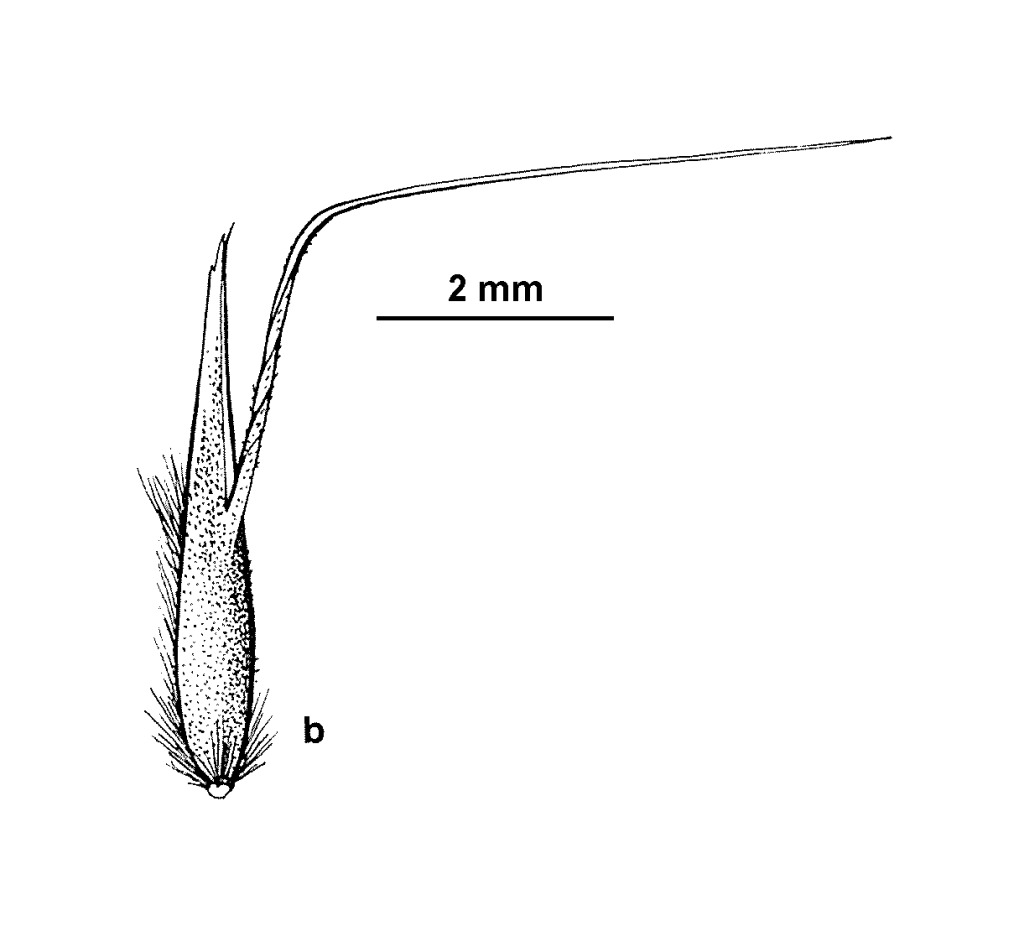Deyeuxia densa
Benth.Tufted or shortly rhizomatous perennial, culms erect, to 80 cm high. Leaves glabrous to shortly hairy; blade usually finely scabrous, flat or inrolled, to 30 cm long and 6 mm (but often 2 mm or less) wide; ligule obtuse, often toothed, 0.5–4 mm long. Inflorescence a dense to rather loose, cylindric or slightly spreading panicle, 2–20 cm long. Spikelets 3.5–7 mm long, green or slightly purplish; glumes subequal, acuminate, keeled, scabrous along the keel; lemma three-quarters to nearly as long as spikelet, narrowly tapered toward apex, densely scabrous, awned from the middle or slightly above; awn usually longer than lemma, twisted in lower part; callus hairs to c. 1 mm long; rachilla bristle plumose, about half as long as lemma. Flowers Oct.–Jan.
GleP, VVP, GipP, OtP, WaP, CVU, GGr, DunT, EGL, EGU, WPro, HSF, OtR, Strz, VAlp. Also Tas., SA. Scattered in southern Victoria from the SA border to within a few km of the NSW border at Maramingo Creek. Occurs mostly in damp lowland heathland and woodland but also in rocky sites at higher altitudes in the Grampians (e.g. Mt William summit, Mt Rosea) where rather common and more robust than eastern forms.
Walsh, N.G. (1994). Poaceae. In: Walsh, N.G.; Entwisle, T.J., Flora of Victoria Vol. 2, Ferns and Allied Plants, Conifers and Monocotyledons, pp. 356–627. Inkata Press, Melbourne.
 Spinning
Spinning

